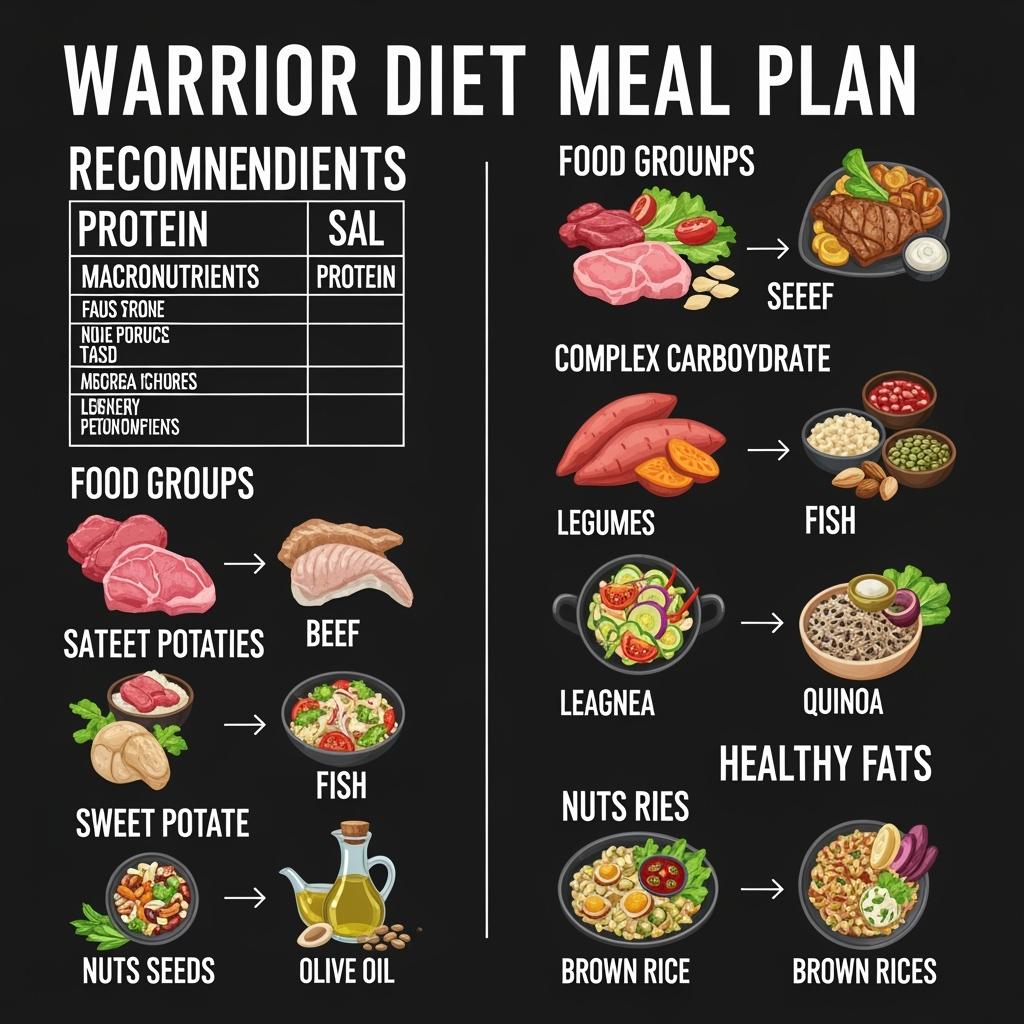A Comprehensive Guide to Time-Restricted Eating
In recent years, intermittent fasting has emerged as one of the most popular dietary approaches, capturing the attention of health enthusiasts, researchers, and medical professionals alike. Unlike traditional diets that focus on what you eat, intermittent fasting centers on when you eat, creating structured periods of eating and fasting that may offer numerous health benefits.
What is Intermittent Fasting?
Intermittent fasting is an eating pattern that cycles between periods of eating and fasting. Rather than being a diet in the conventional sense, it’s more accurately described as an eating schedule or feeding window approach. The concept isn’t entirely new—humans have naturally experienced periods of feast and famine throughout history, and many religious and cultural traditions incorporate fasting practices.
The fundamental principle behind intermittent fasting is that by extending the period between meals, you allow your body to complete its digestive processes and enter a metabolic state that may promote various health benefits, including weight loss, improved insulin sensitivity, and cellular repair mechanisms.
Popular Methods of Intermittent Fasting
There are several approaches to intermittent fasting, each with different time restrictions and flexibility levels. The most common methods include:
The 16:8 method, also known as the Leangains protocol, involves fasting for 16 hours and eating within an 8-hour window. This might mean eating between noon and 8 PM, then fasting until noon the following day. This approach is often considered the most sustainable for beginners because it typically involves skipping breakfast and eating lunch and dinner within the designated timeframe.
The 5:2 diet involves eating normally for five days of the week while restricting calories to about 500-600 for two non-consecutive days. On fasting days, people typically consume small, nutrient-dense meals to meet their caloric limit while still providing essential nutrients.
Alternate Day Fasting alternates between regular eating days and fasting days. On fasting days, some people consume no calories at all, while others limit intake to about 500 calories. This method can be more challenging to maintain long-term due to its intensity.
The Eat-Stop-Eat method involves 24-hour fasts once or twice per week. For example, you might fast from dinner one day until dinner the next day. This approach requires more discipline and may not be suitable for everyone, particularly those new to fasting.
The Warrior Diet follows a 20:4 eating pattern, with a 20-hour fasting period and a 4-hour eating window, typically in the evening. Followers often consume small amounts of raw fruits and vegetables during the day and eat one large meal at night.
Potential Health Benefits
Research on intermittent fasting has revealed several potential health benefits, though it’s important to note that studies are ongoing and individual results may vary.
Weight loss is perhaps the most commonly cited benefit of intermittent fasting. By limiting the eating window, many people naturally reduce their overall caloric intake. Additionally, fasting periods may increase metabolic rate and promote fat burning as the body shifts from using glucose to utilizing stored fat for energy.
Improved insulin sensitivity is another significant benefit observed in studies. During fasting periods, insulin levels drop, which can help the body become more sensitive to insulin when food is consumed. This improved sensitivity may reduce the risk of type 2 diabetes and help with blood sugar management.
Cellular autophagy, a process where cells remove damaged components and regenerate, appears to be enhanced during fasting periods. This cellular housekeeping mechanism may contribute to longevity and reduced risk of various diseases, including neurodegenerative conditions.
Heart health may also benefit from intermittent fasting. Some studies suggest improvements in blood pressure, cholesterol levels, and other cardiovascular risk factors. The anti-inflammatory effects observed in some research may contribute to these cardiovascular benefits.
Brain health is another area of interest, with some research indicating that intermittent fasting may support cognitive function and potentially reduce the risk of neurodegenerative diseases. The production of brain-derived neurotrophic factor, a protein that supports brain cell growth and protection, may increase during fasting periods.
Getting Started with Intermittent Fasting
Beginning an intermittent fasting regimen requires careful planning and gradual implementation. Starting with a less restrictive method, such as the 16:8 approach, allows your body to adapt to the new eating pattern without overwhelming stress.
Preparation is crucial for success. Planning your meals within the eating window ensures you consume adequate nutrients and avoid the temptation to overeat when breaking your fast. Focus on whole foods, including lean proteins, healthy fats, complex carbohydrates, and plenty of vegetables to maximize nutritional intake during your eating periods.
Hydration becomes particularly important during fasting periods. Water, herbal teas, and black coffee are typically allowed during fasting windows and can help manage hunger and maintain energy levels. Some people find that drinking water when hunger strikes helps differentiate between true hunger and thirst.
Timing considerations should align with your lifestyle and preferences. If you’re naturally not hungry in the morning, the 16:8 method with a later eating window might work well. However, if you prefer eating breakfast and having dinner with family, you might choose an earlier eating window.

Potential Challenges and Considerations
While intermittent fasting can be beneficial for many people, it’s not suitable for everyone and may present certain challenges. Understanding these potential difficulties can help you make an informed decision and prepare for success.
Initial hunger and cravings are common as your body adjusts to the new eating pattern. These feelings typically diminish as your body adapts, usually within a few weeks. Having strategies to manage hunger, such as staying busy during fasting periods and drinking plenty of water, can help during the adjustment phase.
Social situations can present challenges when your eating window doesn’t align with social meals or events. Flexibility and planning can help navigate these situations, and remember that occasional deviations from your fasting schedule won’t derail your progress.
Energy fluctuations may occur initially as your body adapts to using different fuel sources. Some people experience improved energy and mental clarity, while others may feel tired or irritable during the adjustment period. These effects typically resolve as your body becomes accustomed to the new pattern.
Certain medical conditions and life circumstances make intermittent fasting inappropriate or potentially dangerous. Pregnant and breastfeeding women, individuals with eating disorders, people with diabetes taking medication, and those with certain medical conditions should consult healthcare providers before beginning any fasting regimen.
Tips for Success
Successful intermittent fasting requires more than just following a schedule. Implementing supportive strategies can significantly improve your experience and results.
Meal quality becomes paramount when you have limited eating windows. Focus on nutrient-dense foods that provide sustained energy and essential nutrients. Protein should be prioritized to maintain muscle mass, while healthy fats can help with satiety during eating periods.
Listening to your body is crucial throughout your intermittent fasting journey. While some initial discomfort is normal, persistent negative symptoms may indicate that your chosen method isn’t suitable for you or that adjustments are needed.
Gradual implementation often leads to better long-term success than jumping into an intensive fasting schedule immediately. Start with a 12-hour eating window and gradually extend the fasting period as your body adapts.
Consistency matters more than perfection. Aim to follow your chosen eating pattern most days rather than adhering to it perfectly every single day. Life happens, and flexibility will help you maintain the practice long-term.
Conclusion
Intermittent fasting represents a unique approach to eating that focuses on timing rather than food restrictions. While research suggests numerous potential benefits, including weight loss, improved insulin sensitivity, and enhanced cellular repair mechanisms, it’s important to remember that individual responses vary significantly.
The key to successful intermittent fasting lies in choosing a method that aligns with your lifestyle, starting gradually, and maintaining realistic expectations. Like any significant dietary change, intermittent fasting works best when combined with overall healthy lifestyle choices, including regular physical activity, adequate sleep, and stress management.
Before beginning any intermittent fasting regimen, especially if you have underlying health conditions or take medications, consulting with a healthcare provider is essential. They can help determine whether intermittent fasting is appropriate for your individual circumstances and provide guidance for safe implementation.
Ultimately, intermittent fasting is one tool among many for improving health and wellness. Whether it becomes a long-term lifestyle choice or a temporary strategy for achieving specific health goals, the most important factor is finding an approach that you can maintain safely and enjoyably while supporting your overall well-being.





